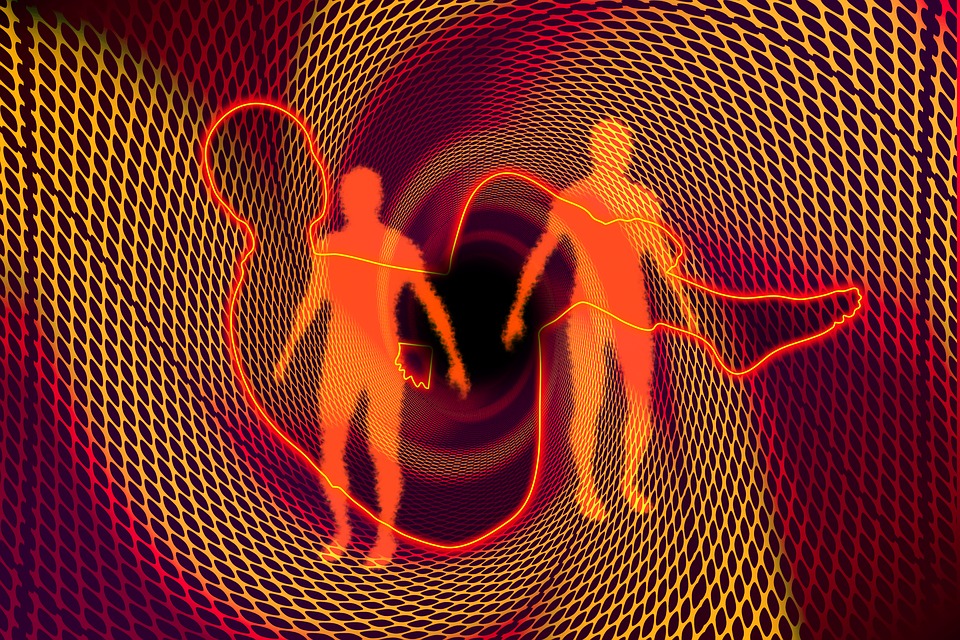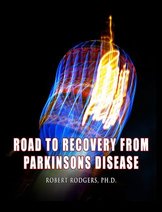BMC Neurol. 2021 Jul 2;21(1):256.
Improvements in clinical signs of Parkinson’s disease using photobiomodulation: a prospective proof-of-concept study.
Abstract
Background: Parkinson’s disease (PD) is a progressive neurodegenerative disease with no cure and few treatment options. Its incidence is increasing due to aging populations, longer disease duration and potentially as a COVID-19 sequela. Photobiomodulation (PBM) has been successfully used in animal models to reduce the signs of PD and to protect dopaminergic neurons.
Objective: To assess the effectiveness of PBM to mitigate clinical signs of PD in a prospective proof-of-concept study, using a combination of transcranial and remote treatment, in order to inform on best practice for a larger randomized placebo-controlled trial (RCT).
Methods: Twelve participants with idiopathic PD were recruited. Six were randomly chosen to begin 12 weeks of transcranial, intranasal, neck and abdominal PBM. The remaining 6 were waitlisted for 14 weeks before commencing the same treatment. After the 12-week treatment period, all participants were supplied with PBM devices to continue home treatment. Participants were assessed for mobility, fine motor skills, balance and cognition before treatment began, after 4 weeks of treatment, after 12 weeks of treatment and the end of the home treatment period. A Wilcoxon Signed Ranks test was used to assess treatment effectiveness at a significance level of 5%.
Results: Measures of mobility, cognition, dynamic balance and fine motor skill were significantly improved (p < 0.05) with PBM treatment for 12 weeks and up to one year. Many individual improvements were above the minimal clinically important difference, the threshold judged to be meaningful for participants. Individual improvements varied but many continued for up to one year with sustained home treatment. There was a demonstrable Hawthorne Effect that was below the treatment effect. No side effects of the treatment were observed.
Conclusions: PBM was shown to be a safe and potentially effective treatment for a range of clinical signs and symptoms of PD. Improvements were maintained for as long as treatment continued, for up to one year in a neurodegenerative disease where decline is typically expected. Home treatment of PD by the person themselves or with the help of a carer might be an effective therapy option. The results of this study indicate that a large RCT is warranted.
Medicine (Baltimore)
2021 Jan 29;100(4):e24191
Effects of concomitant use of hydrogen water and photobiomodulation on Parkinson disease: A pilot study. Chien-Tai Hong, Chaur-Jong Hu, Hung-Yu Lin, Dean Wu
Abstract
Background: Parkinson disease (PD), the second most common neurodegenerative disease, has no cure or applicable disease-modifying approach, only symptomatic therapy. Oxidative stress and mitochondrial dysfunction play key roles in PD pathophysiology. Animal studies have demonstrated that photobiomodulation (PBM) may enhance mitochondrial function and boost adenosine triphosphate production, thus alleviating PD symptoms; however, this process can cause increased reactive oxygen species (ROS) production. Molecular hydrogen (H2) is a potent and possibly therapeutic antioxidant that can mitigate the effect of ROS. PBM targeting the brainstem may facilitate neuronal activity, and the concomitant H2 may clear additional ROS produced by PBM. Therefore, this study aimed to determine the safety and effectiveness of PBM + H2 in patients with PD.
Methods: We included 18 patients with PD (age 30-80 years) who were at Hoehn and Yahr stages II-III. All the participants received daily PBM + H2 therapy for 2 weeks. The adverse event and the Unified Parkinson Disease Rating Scale (UPDRS) scores were recorded.
Results: We noted that the UPDRS scores began significantly decreasing from the first week, and this improvement persisted until the end of therapy. Moreover, no adverse event was recorded. After 1 week of therapy cessation, UPDRS scores slightly increased but the improvement remained significant compared with the baseline.
Conclusion: This novel, proof-of-concept study demonstrated that PBM+H2 therapy is safe and reduces disease severity. A larger-scaled clinical trial is warranted to completely investigate the effects of PBM + H2 therapy on PD.
doi: 10.1016/j.sleep.2018.01.001. Epub 2018 Jan 31.
The effect of light exposure on insomnia and nocturnal movement in Parkinson’s disease: an open label, retrospective, longitudinal study.
Abstract
Insomnia, hypersomnia and REM Sleep Behavior Disorder (RSBD) during sleep are major problems for patients suffering from Parkinson’s disease (PD) but they are also used to predict its onset. While these secondary symptoms detract from the quality of life in PD patients, few treatment options are available due to limited efficacy or risk of complicating the treatment regimen. Light therapy (LT) has been suggested as a strategy for sleep disorders but it has only been implemented recently for use in PD. An open label, retrospective study was undertaken where PD patients had been undergoing LT, using polychromatic light, for four months to 15 years prior. It was found that 1 h exposure to light, just prior to retiring, significantly improved insomnia and reduced RSBD in as little as one month after commencing LT. In addition, the improvement was maintained as long as LT was continued over a four to six year period. The efficacy of LT in alleviating these sleep related conditions was not compromised by time since diagnosis or age of the patient. These results intimate the value of long term application of non-invasive techniques such as LT for treating sleep disorders in PD and justify further controlled trials on the long term efficacy of LT.
Review of Photobiomodulation Research for Older Subjects
Ageing Res Rev. 2021 Sep;70:101415.
Photobiomodulation for the aging brain.
Abstract
Longevity is one of the great triumphs of humanity. Worldwide, the elderly is the fastest growing segment of the population. As a consequence, the number of cases of age-related cognitive decline and neurological diseases associated with aging, such as Alzheimer’s and Parkinson’s, has been increasing. Among the non-pharmacological interventions studied for the treatment or prevention of age-related neurocognitive impairment, photobiomodulation (PBM) has gained prominence for its beneficial effects on brain functions relevant to aging brains. In animal models, the neuroprotective and neuromodulatory capacity of PBM has been observed. Studies using both animals and humans have shown promising metabolic and hemodynamic effects of PBM on the brain, such as improved mitochondrial and vascular functions. Studies in humans have shown that PBM can improve electrophysiological activity and cognitive functions such as attention, learning, memory and mood in older people. In this paper we will review the main brain effects of PBM during aging, discuss its mechanisms of action relevant to the aging brain, and call for more controlled studies in older populations.





0 Comments
1 Pingback